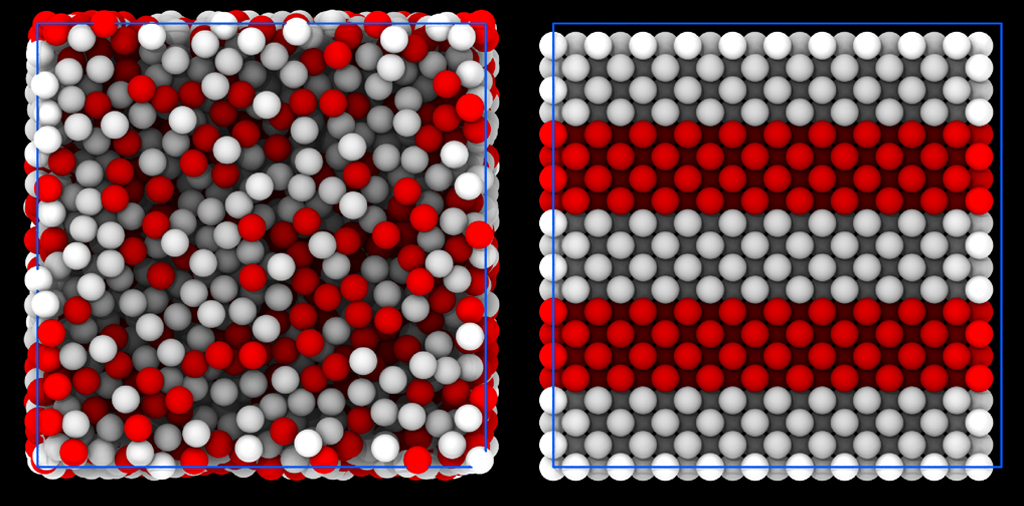The value measured in the amorphous (disordered) structure with exactly the same chemical composition is considered as a lower limit for the thermal conductivity of a material. Indeed phonons, which are responsible for the heat transport, are strongly impacted by disorder, and their lifetimes reach in this case the minimum time scale allowed by thermal fluctuations. An appropriate design at the nano-scale, however, is known to allow reducing the thermal conductivity even below the amorphous limit. This has been demonstrated in numerous breakthrough experiments, but a comprehensive understanding of the physics behind these observations was lacking.
We have studied by classical molecular dynamics computer simulation a simple system, formed by a binary mixture of point particles with different masses (red and white in the figure) interacting with a Lennard Jones potential. The vibrational properties and the low temperature thermal conductivity have been investigated in the two cases where the masses are distributed at random positions (left) or organized in a fully ordered intercalated structure (right). We have demonstrated that by controlling the width of the ordered domains, the thermal conductivity in the direction of the replication pattern can be tuned to reach a value lower than that associated to the completely disordered structure. In this case, the different domains act as filters in different non-overlapping regions of the vibrational spectrum, therefore significantly suppressing the total phonons transport in the direction of the replication pattern. We have also elucidated the critical role played by the interfaces and shown how to directly modify these latter to achieve this remarkable result.
We believe that our findings contribute to a deeper understanding of the physics behind very-low thermal conductivity, and provide insight for developing new design concepts for meta-materials with controlled heat conduction behavior.
This is a collaboration between the INAC/SPrAM and the LiPhy Institute at the Joseph Fourier University in Grenoble.
Funding from the Nanosciences Foundation, Grenoble.
Computer simulations performed using the Froggy platform of the CIMENT infrastructure.

3-dim systems studied in this work. We have considered binary mixtures of Lennard Jones particles with different masses (red and white beads). In the amorphous configuration (left) particles are randomly distributed in the simulation box. In the super-lattice structure (right) particles are regularly organized in intercalated layers, whose width is the control parameter used to tune the thermal response.